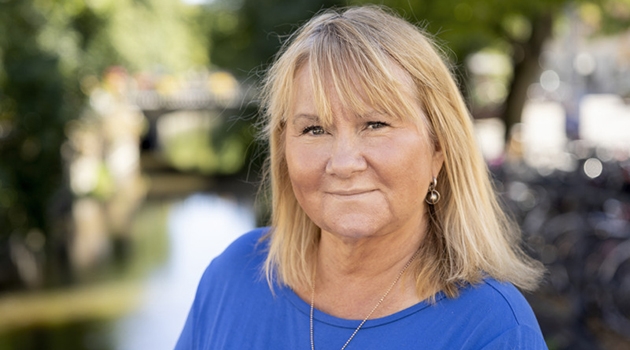“There wasn't one Soviet Union – there were a lot of Soviet Unions”
Hello there, Li Bennich-Björkman, professor at the Institute for Russian and Eurasian Studies and Skyttean Professor of Eloquence and Political Science at the Department of Political Science, who wrote the book "Behind and beyond the Iron Curtain. The Soviet years and in the Baltics and Ukraine".
How did the book come about?
“It's the result of all the research that I've been doing on and off for a very long time, twenty years or more. I started researching Estonia and Latvia, and later Lithuania and eventually Ukraine became a part of the analysis. Comparing these four is not common, but it is of value. The book is largely based on the interviews I have conducted over the years where I have met and talked to politicians, artists, writers, party representatives, economists and others in these four countries.”
In what way did the emancipation processes in the Baltic countries differ from that in Ukraine?
“The emancipation – perestroika as it was called in Russian – was different in all four countries, depending, as I show in the book, on how the conditions that they carried with them from the Soviet years and earlier differed. But in all four countries, the former local Communist Party was involved in the democratization process and survived, one might say, the transition to a different system. In Ukraine, this tendency was strongest and a resurgent Communist Party won the first parliamentary elections after independence.”
Did the approach to the leadership in Moscow differ between these countries during the Soviet era?
“Yes, to a great extent. Both Lithuania and Estonia were skilled in trying to find a balance between the central power in Moscow and the demands and desires that existed within the intelligentsia and among the population at large. Latvia had a very hard-line and dogmatic party after 1959 and a major purge of more nationally minded people within the party. Ukraine was similar to Latvia in this respect.”
Does the Soviet era still affect the countries?
“The Soviet era is part of the countries' history throughout the 20th century, whether you like it or not, and both in the political and economic elites there are people there from that time, even if time is running out.
Relations with Russia are, of course, coloured by what unfolded during these decades, deportations, purges, a major famine in Ukraine, persecutions of dissidents and culture bearers. Among many other things.”
During the work on the book, did you discover anything that surprised you?
“Yes, very much so. The local communist parties were a lot more important than I had thought, and how the relationship between these and the intelligentsia in the different countries played a major role in shaping a unique political culture or political practice. There wasn't one Soviet Union – there were a lot of Soviet Unions.”
Åsa Malmberg

